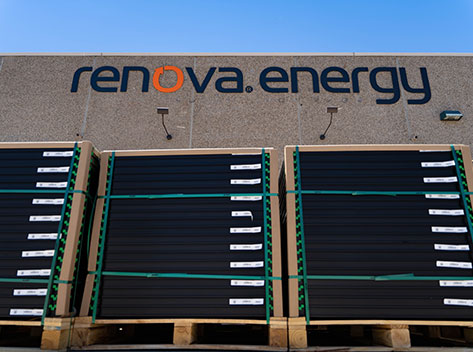You’ve probably heard about community solar, but what does it actually mean? Read on to learn more!
A community solar project is a large, centralized solar power plant whose electricity is shared by more than a single residence or business. Think of community solar like a mini solar farm, just for one small area!
The size of a residential solar installation is measured in kilowatts, while community solar projects are measured in megawatts, meaning that a single community solar project is intended to power several homes and businesses within a designated area. Typically, when you join a community solar program, you are given access to electricity from a certain number of panels in the solar array, or you purchase a specific amount of electricity.
As supporters of “going green,” our Coachella Valley solar experts at Renova Energy are here to discuss both the benefits and downfalls of community solar projects:
The Benefits of Community Solar
Joining a community solar project can provide the following benefits:
- Increased access to green energy for non-community solars
- Access to another mini-grid from the utility in addition to the existing utility model
Now For the Downside
Despite the benefits, residents and business owners who take part in a community solar project will likely discover the following downfalls of such a program:
- You, as a resident or business owner participating in this community solar project, do not own the solar; the utility company does.
- You are often charged a “green rate,” which isn’t necessarily less expensive because, again, your utility company owns the infrastructure.
- You do not receive tax benefits like the Federal Income Tax Credit for going solar.
- The maintenance costs will fall on all community solar participants.
- There are often additional fees and surprises on your annual bill.
There is a way for community solar to make sense, particularly in shared housing situations or smaller business parks or apartment complexes; however, in general, the savings are not passed on to the ratepayer in the ways you might expect from a green energy system. In short, there’s a reason why our Coachella Valley solar installation professionals at Renova Energy do NOT contract for community solar projects.
Why Rooftop Solar Trumps Community Solar Projects
Rooftop solar, on the other hand, directly benefits the ratepayer and the utility’s grid. Savings are immediately available for the ratepayer, and excess solar energy generation is pushed onto the grid, relieving the overall strain on the grid’s production. With a zero-down lease or loan through SunPower, Renova Energy customers’ savings start immediately, and by taking advantage of the Federal ITC at 26% through a cash purchase, the payback period is 5-7 years on average.
To learn more about solar options for your home or business, reach out to one of our certified Energy Consultants today! Our solar experts in the Coachella Valley are ready to help you save BIG.

